Purim part 1: Megillot and Groggers
BY CLAIRE BERGER AND HANNAH SROUR
| Author | |
| Date Added |
Hava narishah - rash, rash, rash! Purim is less than two weeks away! This week we’re featuring some of the beautiful megillot and groggers from the Shaar’s museum collection.
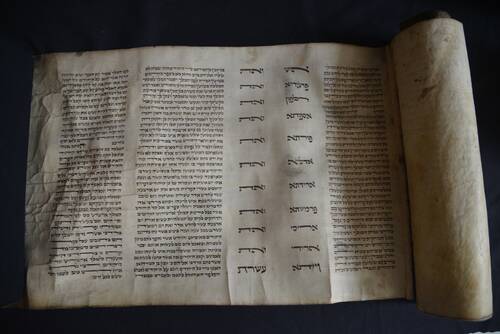
This remarkable megillah (c. 1830), written on parchment made of sheepskin, originates from Oran, Algeria, which had a large Jewish community. This was gifted to the Shaar by Gordon L. Echenberg.
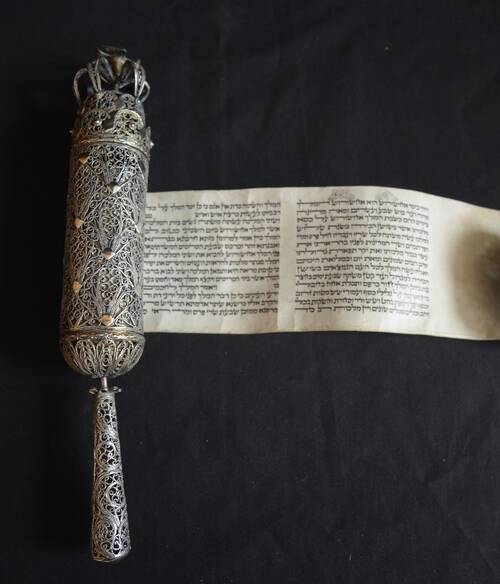
There are a few megillot in the collection which are encased in some beautiful silver cases. Pictured above is one of these megillot, made in Eastern Europe in the mid 19th-Century. Gifted to the Shaar by Mr. Harold Lande, 1991.
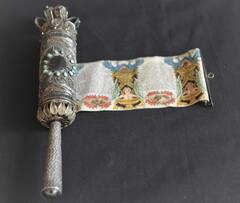 |
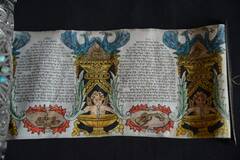 |
This megillah, with a silver filigree case, encrusted with turquoise and garnets, was made in the early 19th Century in the Middle East. Particularly impressive is the scroll itself, handwritten on parchment, and illustrated with blue peacocks, musical instruments, and mythical figures. The scroll was made around 1920 in Palestine. Gifted to the Shaar by Mrs. Max Y. Klein, Mrs. Gerald Weiner, and Mrs. Kenneth Shere in memory of their mother Edith Rosen, October 8, 1977.
Groggers
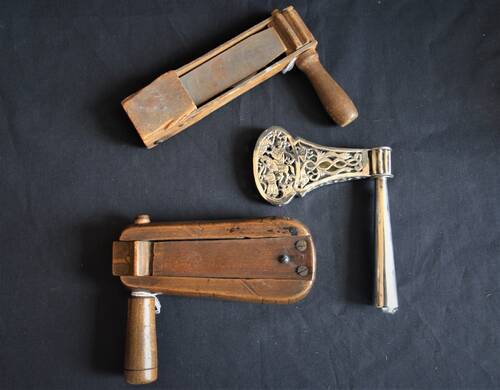
While many groggers we use these days are typically made of either metal or plastic, this was not always the case! In our collection, we have two wood groggers, and another made of silver. The grogger featured at the top of this photograph was made in Poland in the early 20th century. The other wood grogger (oak) at the bottom, was made in 1850. This one was gifted to the Shaar by the Guttman family in honour of Joseph Guttman’s birthday, 1985. It was initially purchased in Ripon, England at an antique fair. The silver grogger in the middle, made in the United States between 1920 and 1930, was a gift of Michael Lax in memory of his father, Dr. Sam Lax (April 14, 1980). This grogger is also quite ornately decorated.
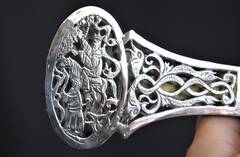 |
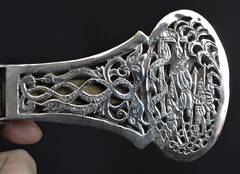 |
The grogger depicts two instances in megillat esther where Haman is humiliated or bested by the Jews whom he sought to eradicate. One side depicts the scene in which Haman is made to lead Mordechai on the king’s horse, declaring to all that this is what is done to one whom the king wants to honour. The other side depicts Haman hanging on the gallows.
Saturday, October 25, 2025
3 Cheshvan 5786
OTHER ARTICLES
Telephone
514.937.9471
Fax
514.937.2067
admin@theshaar.org
Privacy Settings | Privacy Policy | Member Terms
©2025 All rights reserved. Find out more about ShulCloud
